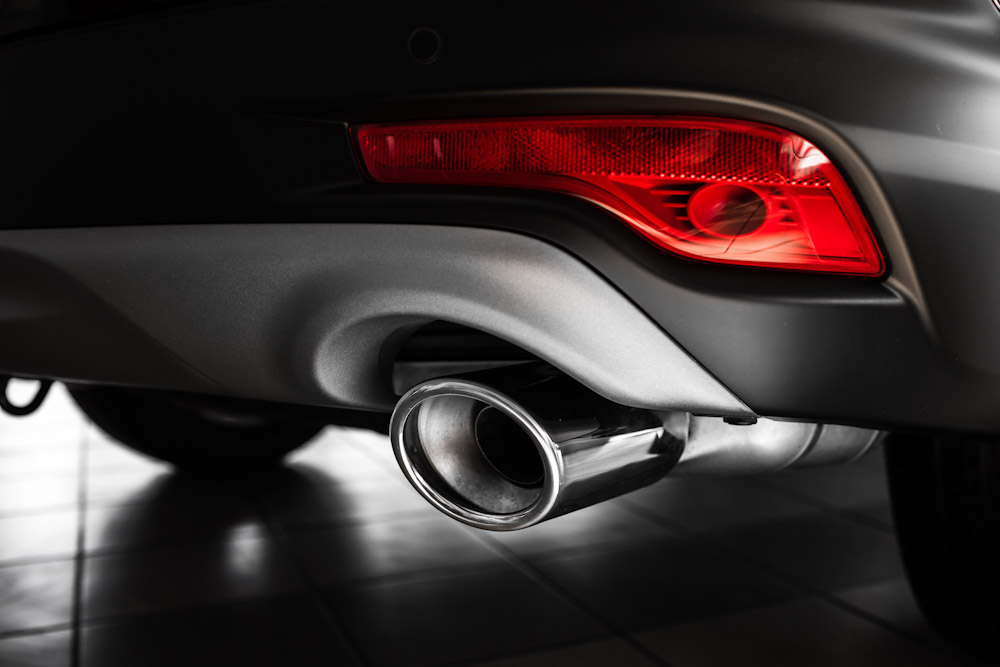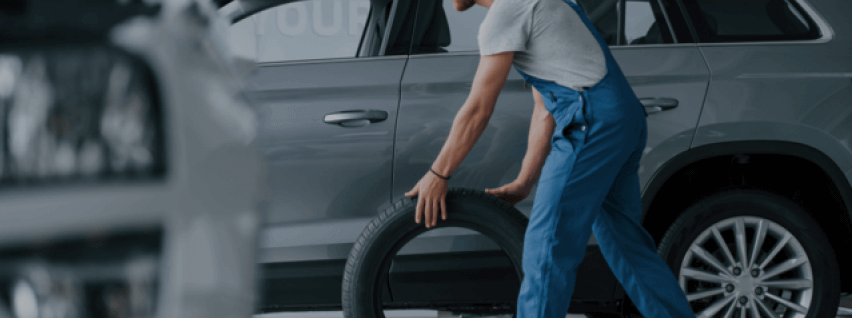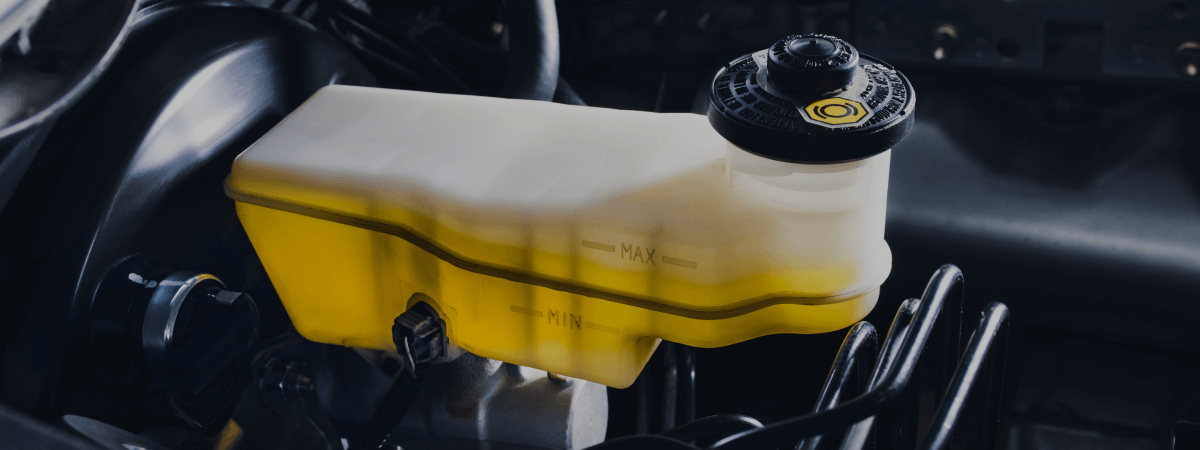
There’s a lot more to an exhaust system than just a few inches of tailpipe you see protruding from underneath your vehicle. The Jerome car repair technicians at Master Muffler lay it all out below.
The exhaust is a vital component of any vehicle, not just to reroute noxious fumes from the engine, but to reduce the number of pollutants as well.
What the Exhaust System Does
Engines produce a lot of fumes, as well as noise. An exhaust system works to reduce the emissions released into the air, and the noise pollution as well. There are a lot of parts working together to collect the engine fumes and clean them, all while reducing and fine-tuning the sound emitted.
Parts of the Exhaust System
Whether you’re working with the stock exhaust system or you’ve added some aftermarket features, your exhaust system is comprised of the following main parts.
- Exhaust Manifold
- Oxygen Sensor
- Catalytic Converter
- Hangers
- Exhaust Joints
- Muffler
- Resonator
- Tail Pipe
Exhaust Manifold
Connected to the engine, the exhaust manifold is what initially collects fumes or emissions. The manifold directs the harmful fumes to the catalytic converter.
Catalytic Converter
All the engine fumes go through the catalytic converter to be, well, converted. Engine exhaust contains carbon monoxide, nitrous oxides, particulates, and other potentially harmful pollutants. When these fumes go through the catalytic converter, precious metals such as platinum, palladium, or rhodium get to work. These precious metals remove many of the pollutants from the engine fumes, producing less harmful emissions containing water vapor, carbon dioxide, and nitrogen.
Oxygen Sensor
Your engine requires oxygen for the fuel combustion process, so an oxygen sensor in the exhaust system analyzes how much oxygen is emitted in the exhaust. The vehicle’s computer receives that information and can make adjustments to the fuel intake process if it’s determined there’s too much or too little oxygen in the exhaust.
Hangers
The exhaust system is suspended from the undercarriage of your vehicle with a series of hangers. Each piece reduces the amount of stress on the others, so it’s important that all parts of the exhaust system are properly secured to the car.
Exhaust Joints
Since the exhaust system contains a series of pipes, there are joints between pieces that can affect your vehicle’s performance. Leaking joints can negatively impact fuel economy, release toxic fumes into your vehicle, and hinder the effectiveness of the muffler.
Muffler
As you can imagine, the combustion process in your engine isn’t quiet. Even small explosions make a lot of noise. The muffler helps deaden the sounds your engine produces via a series of chambers and pipes.
Resonator
This component helps fine-tune the work of the exhaust system. It harnesses the vibrations produced by your engine and improves the flow and sound of the exhaust. Resonators can be switched out with aftermarket customizations to get just the right sound out of your exhaust- such as a rat-a-tat-tat, a low rumble, or even a feisty pop-pop-pop.
Tail Pipe
Finally, the part of the exhaust system you can actually see on a daily basis! The tailpipe is the last piece of the system, and it either meets up with or extends just past your vehicle’s rear bumper. It attaches to the muffler under your car and directs the cleaned, tuned emissions out of your exhaust system and into the air.
If you need to schedule Jerome car repair for any part of your exhaust system, Master Muffler is definitely here for you! We can not only address stock exhaust issues but aftermarket ones as well. Or, if you want to upgrade to a smoother sound, we can help with that, too.
Why Exhaust Systems are Important
Since the emissions produced by your engine will eventually enter the atmosphere, it’s important to have efficient exhaust systems. Without clean air acts and regulations on emissions, we run the risk of living with constant smog settling in our cities. Additionally, a well-functioning exhaust system ensures toxic fumes aren’t finding their way from the engine directly into the cabin of your vehicle. Let’s take a brief look at what it was like before the era of emissions regulations.
Pre-1970
In the 1940s, following the end of World War II, America saw a dramatic increase in the number of vehicles on the roads. Metal was no longer scrapped for the war effort, and rations on gasoline were lifted. Additionally, road infrastructure boomed, and there were more places for all these new vehicles to go.
In rural areas, the pollution created by these vehicles may not have been a big issue at first; with open farmland, engine emissions could be released into the atmosphere and invisibly float up to the ozone layer to cause silent damage. In cities and valleys, however, it was a different story.
Large buildings and mountains trap polluted air, keeping it close to the surface of the Earth. That means urban places such as New York and Los Angeles saw heavy smog settling over their downtowns. Before the Environmental Protection Agency (EPA) got involved in cleaning the air in the 70s, air pollution was becoming a problem.
1970 Clean Air Act
It may be a pain to get your vehicle safety and emissions testing done each year, but there’s a reason behind it. In the 1970s the US Congress passed the Clean Air Act. This allowed the EPA to implement practices to reduce harmful emissions from vehicles in an effort to reduce smog and protect the environment from long-term damage.
The Clean Air Act was the catalyst for removing lead from gasoline and creating vehicles that are 99% cleaner today than those driven in the 1970s. The slight inconvenience of maintaining a vehicle so it passes emissions is well-worth the payout- cleaner air for everyone.
Our car repair services in Jerome aren’t limited to just the muffler; let us know if we can help with oil changes, engine tuneups, or alignments. Contact Jerome Master Muffler HERE, or give us a call at 208-537-2240.
Related Posts
Key Takeaways On average, passenger vehicle tires last 40,000 to 60,000 miles, depending on type, driving habits, and maintenance. Replace tires when tread depth reaches 2/32”, if damaged, or older than 10 years. Regular rotation, alignment, and proper inflation extend tire life. Aggressive driving, poor roads, and harsh weather shorten tire lifespan. Take advantage [...]
When you think about car maintenance, you probably focus on oil changes, tire rotations, and maybe even brake pad replacement. But what about your brake fluid? If you’ve ever wondered, “What does brake fluid do?” or “Why is brake fluid important?”, you’re not alone. Brake fluid might not be the most talked-about part of [...]
Is that high-pitched squeal from your brakes driving you—and everyone else—crazy? Don’t ignore it. Squeaky brakes aren’t just annoying, they’re your car’s way of saying something needs attention. Whether you're cruising through Salt Lake City or winding up Idaho’s mountain passes, here’s what’s likely going on, how you can fix it, and when it [...]





